A few blog posts ago I wrote about purpose and how it influences what we do and what we create. I included writing an obituary as a way of declaring the purpose you want to live into before you die. A way of creating a designed life.
I once heard poet David Whyte comment that the only thing worse than struggling to live your life is discovering that you’re living someone else’s life! How do we know if that’s the case? For most of us, unless we’ve returned to critically examine what made us who we are, the odds are high that there’s a
huge degree of autopilot going on, set by a seven year old version of us. So what has someone change what would appear to be a perfectly good life (or obituary), or as Peter Block once described change to me, incur a self-inflicted wound?
As obituaries (and lives) go, I’d say mine wasn’t bad. But the exercise itself gave me much pause to reflect. When I stepped back I had an epiphany. Like the realization that what got me here won’t get me there, I saw that after decades more of life I would still be where I was, just more so, and older. Is there anything wrong with that? Only the awareness that I was really having much less impact, and playing a much smaller game, than I thought I was: Epiphany Part One: Is this really all I’ve done in my “one wild and precious life” as poet Mary Oliver would say?
I also realized that in order to play a bigger game and make the difference I yearned to see in the world (one of my core values) I couldn’t do it alone. And it couldn’t be about me. Epiphany Part Two: I can’t do this alone. It can’t be about me.
This begged the question about why I would inflict this wound upon myself instead of sticking to familiar territory. I revisited what was driving me. My career has been built upon stimulating people to see new possibilities. It’s what would light me up – seeing them light up. But I started to see that wasn’t enough. It’s about what people do with that light.
My fantasy is living in a world where the workplace is a place where all people flourish. A place where people feel the vitality of being connected to their greatest potential and possibilities. I imagine a world where the person in customer service really feels good about serving. Where everywhere we go we’re both serving, and being served, by people who care. How awesome would that be?
We would come home from work and it was a good day. Work had purpose and we fulfilled it. The dog stops getting kicked, the kids have parents with energy, and we have the space to look at the world differently. Epiphany Part Three: Connection to the bigger purpose.
In Tribal Leadership the authors talk about five phases of the epiphany that Tribal Leaders go through. I borrowed from them in describing my first three which led to my new obituary. I look forward to continuing the process, with a bit of ambivalence. It’s uncharted territory, but it honors my core values of learning, curiosity and making a difference.
Compare my two obituaries and see what you notice as different. The exercise has challenged me to grow, today, before I die.
I encourage you to write your own obituary. Then die and die again. Growth is always about what you give up.
David Brown 1955 – 2045
David Brown ended his career as an executive coach, consultant and artist, usually all three at once. In some ways he loved being an artist the most because artists never retire, and he felt that was the way to be at work, where it doesn’t feel like work. That passion showed in the difference he made in the lives of those he served. Whether it was being a psychotherapist, a life coach, executive coach or later what he simply called working in leadership development, it was always really the same. That can be summed up best by what he referred to as his noble cause: calling forth a world in which the workplace is a place where all people can flourish. A place where they feel the vitality of being connected to their greatest potential and possibilities.
Early in David’s career his focus was on working with individuals and families as a psychotherapist. You can see the difference he made in people’s lives by the number of former patients who found ways to stay in touch. When David discovered the coaching profession he knew that was his calling, with a focus on creating lives people loved instead of fixing problems. David was proud of being a part of people designing their lives on purpose. The testimonials from his clients reflect this shared joy.
But that was not enough for David. A lifelong learner, he was constantly reinventing himself. He shifted his focus to coaching leaders because he felt that made a greater impact in many more lives. He was most excited when that work created ripples that transformed workplaces into spaces where people could flourish and realize their potential. Staying true to his nature that led him to focus on the type of leadership and organizational culture change that we remember him most for today.
Many of the companies that today represent the kind of workplaces which we all admire are an outgrowth of that work. Creating possibilities for people to live lives of joy and purpose meant stimulating greater consciousness, and that meant transforming the workplace as we knew it. David invited other thought leaders with different talents but resonant core values to help create a network of passionate change agents with a shared vision of what could be. This network of MasterCoaches went on to influence virtually every sector of our lives, from healthcare and conscious business to education, non-profits and the arts. As we look back today many of us can’t relate to the old notion of top down leadership and working in cubicles, but back in David’s day that was as ubiquitous as bulky laptop computers. Today we speak of workplaces as if they have a soul, where leadership is a shared responsibility. Work places have become life spaces, environments that nurture us and encourage community, growth, collaboration and innovation. While David would never take credit for these changes that we now see as commonplace, his passion for a more conscious, resonant and collaborative world ignited the hearts and minds of so many others that it would be remiss to not include him as a significant catalyst of these developments.
Discussing David’s contributions would be incomplete without including his work as an artist. His wife of 47 years, Jill Brown, was a fiber artist who re-introduced David to the artist within him. David saw art as a conduit for channeling and connecting the deepest parts of our humanity. He felt it was a tragedy for people to go to work, or school, and leave one of the best parts of themselves in the parking lot. He was a passionate advocate for integrating the arts back into the fabric of our lives, for more whole brain thinking and living. He felt that the lopsided over-emphasis on left brain thinking created a lobotomized version of our greatest potential. The almost seamless integration and appreciation of art, and the whole person, in business, education, and healthcare that we experience today has much to do with the LifeArt Foundation that David and Jill founded.
While these are the legacies that impacted our lives the most, the grounding center for David was his family and the opportunity to be a loving father and husband. He said his greatest privilege was contributing to the success of his children, Dylan and Logan, and helping in some way to make the world a better place for them and their children. He swelled with pride when talking about the accomplishments Dylan made in education and literature, and Logan in health and well-being.
In the end it could be said that David loved most the simple joys of life; making people laugh, enjoying nature, and creating sculptures designed to be provocative and engaging. He savored time hiking our national parks, walking the disc golf course with friends and evenings around his fire pit with friends and family. Although he received numerous accolades for his work and his art, David always felt that his greatest reward was simply knowing that he touched people in a way that revealed their own possibilities and the differences they could make for others. He just wanted to leave the world a better place than he found it. I believe we can all say he accomplished his mission.

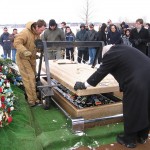

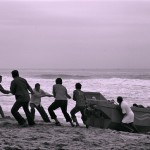
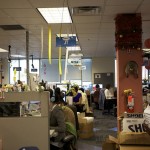

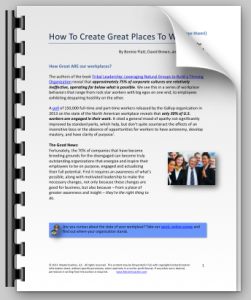
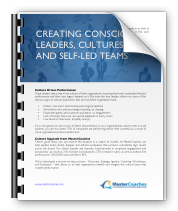
Social Links